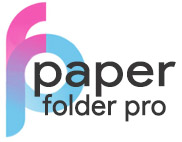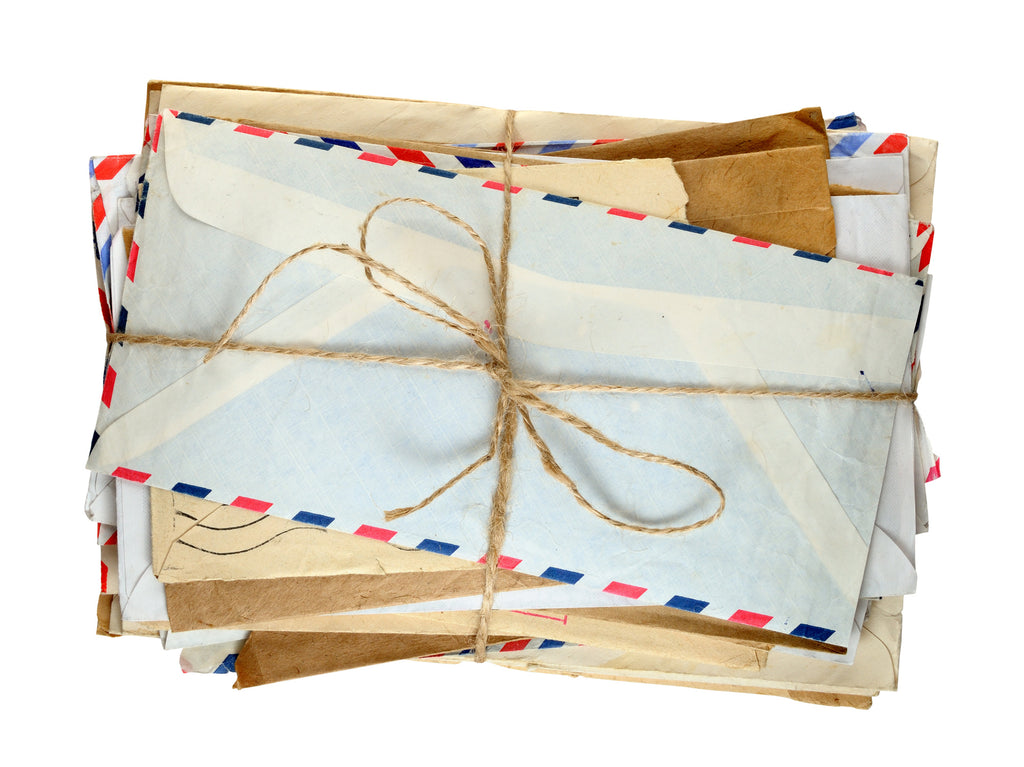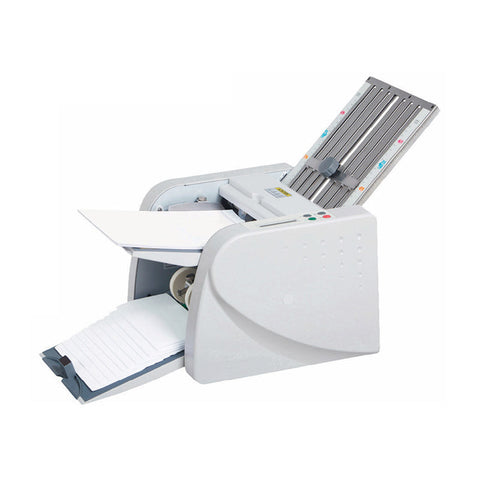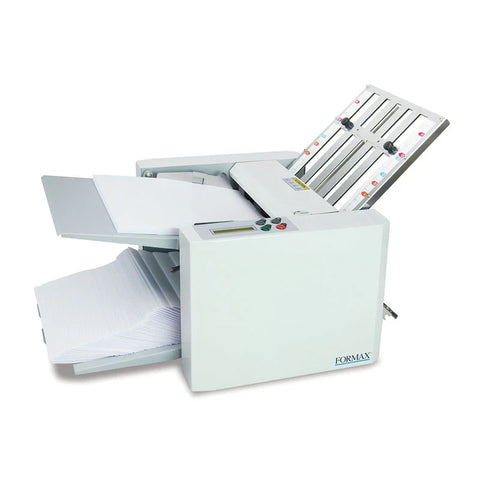If your company or organization does weekly or monthly mailings, are you using a letter folding machine?
If not, imagine how much time and energy you could save having a machine quickly handle the tedious work of folding all of that mail.
And if you do have one, you know how much time and money you're saving.
There's no arguing that paper folders make everyday office life a lot easier. But as with all technology, you can still experience problems when using one.
If your machine isn't performing up to speed, read on to discover how to address these problems.
Troubleshooting Problems with Your Letter Folding Machine
We'll take a look at the the most common problems you might experience with your machine and things you can do to get it back up and running.
1. No Power to the Machine
We'll work from the assumption that the machine has been turned on and is plugged into an outlet.
But it's possible that the outlet is connected with a wall switch that hasn't been flipped to the "on" position. Or that the outlet itself isn't functioning.
Try plugging a different electronic device into the outlet to ensure that the outlet is working. And be sure that if you're using a power strip or surge suppressor, it's also turned on and functioning.
If all of those are in good shape, take a look at the power cord or the wires for other connections to be sure there's no damage to them such as kinks, frays or nicks.
If all of these steps don't work, it might be an electrical problem. If you still have a warranty, contact the manufacturer for a repair or replacement part.
Above all else, do not take the machine apart. This will void your warranty.
2. Folds Are Inaccurate
If you're using an automatic letter folding machine:
This could simply be a matter of needing to be reset. Try turning the paper folder to allow the folding trays to reset to the neutral position.
If you're using a manual letter folding machine:
You'll probably need to make some adjustments to the folding plates. And they may just be small adjustments, so experiment until you get the right configuration.
3. Folds Are Crooked
Does your letter folding machine have a skew wheel that can be adjusted? Check to see that it's adjusted to the appropriate position to deliver precise folds.
Another possibility is that the friction wheel isn't centered. This is usually remedied by readjusting the paper trays so that the friction wheel doesn't pull the paper in crooked.
4. Folded Documents Are Wrinkled
The easiest fix here is to be sure that you're only folding documents with dry ink.
If that's not the issue, then check to see that the folding plates are clean and properly aligned. Check your machine's instruction manual on how to clean and realign the plates.
5. Machine Will Not Pull In Paper
If you're using a paper that's coated or glossy, it may be too much for the friction roller to handle. They can't grab onto this sort of paper.
Another possibility is that the rollers are dirty and coated with residual ink or dust. Clean the rollers with a roller cleaner.
You could also try fanning the paper, since some letter folding machines require that the paper be folding prior to feeding it into the machine.
6. Machine Is Frequently Jamming
There are four things to check right out of the gate:
- Your fold plates are installed tightly and correctly
- There are no leftover particles of paper from a previous jam
- You have the correct combination of knob settings for your fold
- Your paper stop knobs are straight
If those all check out, then ask yourself the following questions:
1. Is Your Machine Set up Correctly?
This is the most obvious place to begin because even though set up is fairly easy, it's possible that you simply misread the guide or inverted the fold plates while doing it. After all, you're only human!
Go back over the guide and ensure that everything is placed correctly. And be sure to check your settings. Particularly before engaging in a larger job.
2. Are You Folding Intended Materials Only?
As we talked about earlier, folding heavy paper that is coated or glossy can create issues with friction-fed machines. A letter folding machine is created to fold regular bond paper.
And that's all.
While it should go without saying, do not attempt to fold plastic, cardboard, envelopes or any other types of material not intended for the machine.
Not only will you not get a fold, but you run the risk of damaging your machine beyond repair.
3. Is There Static Electricity in the Air or Paper?
You might not have considered this.
But there are certain situations when a lot of static electricity is created. It happens most frequently during the winter in cold and dry climates. But it can also happen if your letter folding machine is in proximity to computer equipment.
Too much static electricity causes sheets of paper to stick together. So instead of a single sheet, double or triple sheets get pulled into the roller of the machine.
Then, as the sheets are further pulled through the folder, more static can build up. Then you have a serious jam on your hands.
If the air is particularly dry where you are, try an anti-static spray that can be sprayed throughout the room. Be sure to spray upholstered furniture, any carpet, near the paper folder, and even on the edges the paper that is being fed into the machine.
You could take it one step further by using a paper jogger to help eliminate static in your documents and to align your pages for cutting, mailing or shipping.
Proper Care of Your Machine Means Longer Life
Taking the time to perform regular maintenance on your letter folding machine will keep it in good shape for a long time.
And that means saving time and money for you.
If you have any questions about your machine, feel free to contact us. We're here to help keep your machine operating at optimal capacity.




